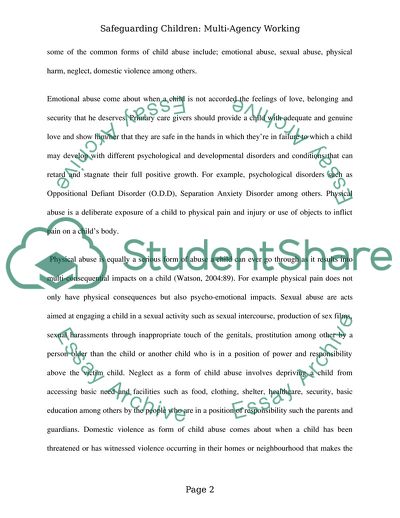Cite this document
(Safeguarding Children - Multi-Agency Working Essay Example | Topics and Well Written Essays - 4250 words, n.d.)
Safeguarding Children - Multi-Agency Working Essay Example | Topics and Well Written Essays - 4250 words. https://studentshare.org/sociology/1854743-safeguarding-children
Safeguarding Children - Multi-Agency Working Essay Example | Topics and Well Written Essays - 4250 words. https://studentshare.org/sociology/1854743-safeguarding-children
(Safeguarding Children - Multi-Agency Working Essay Example | Topics and Well Written Essays - 4250 Words)
Safeguarding Children - Multi-Agency Working Essay Example | Topics and Well Written Essays - 4250 Words. https://studentshare.org/sociology/1854743-safeguarding-children.
Safeguarding Children - Multi-Agency Working Essay Example | Topics and Well Written Essays - 4250 Words. https://studentshare.org/sociology/1854743-safeguarding-children.
“Safeguarding Children - Multi-Agency Working Essay Example | Topics and Well Written Essays - 4250 Words”. https://studentshare.org/sociology/1854743-safeguarding-children.


